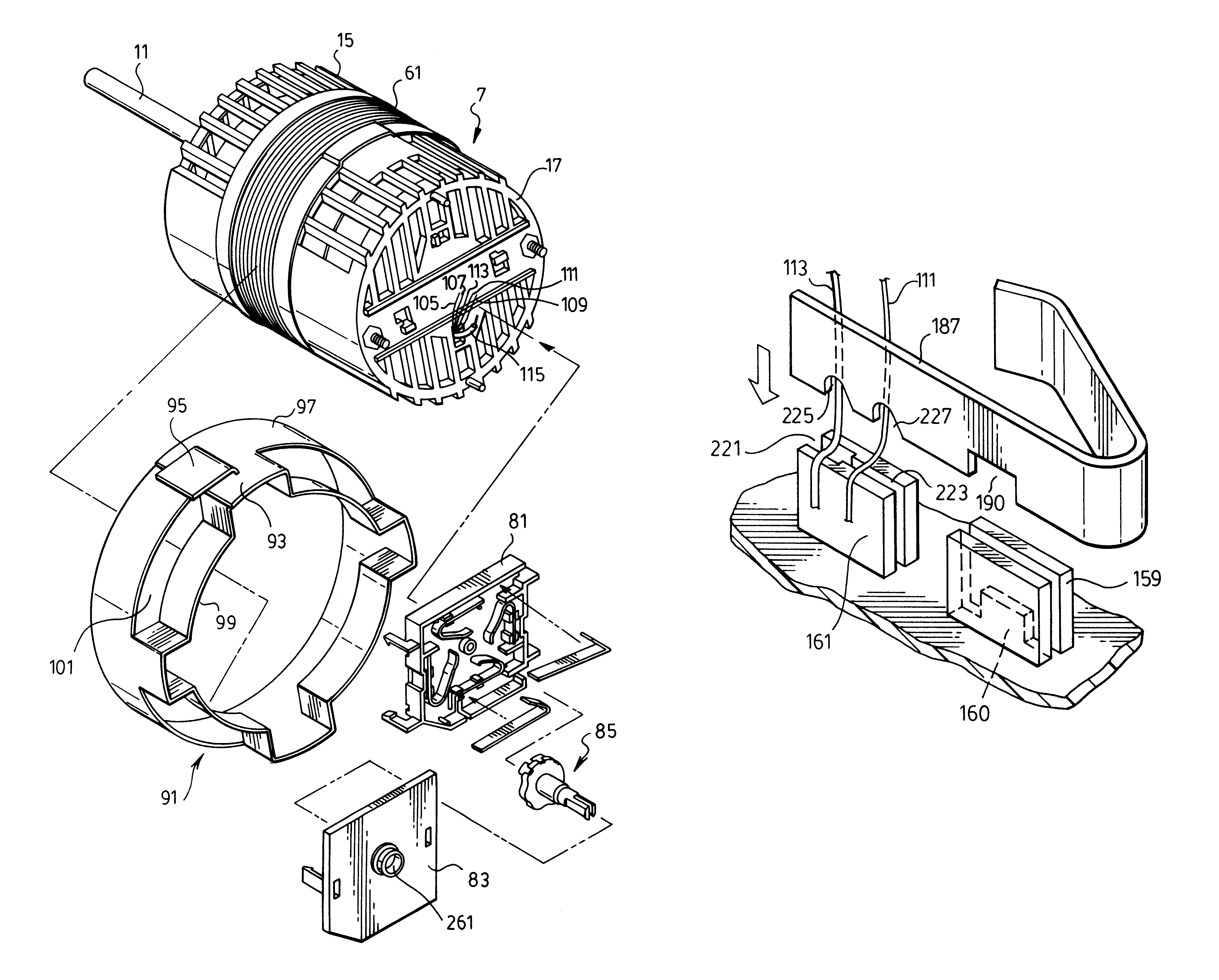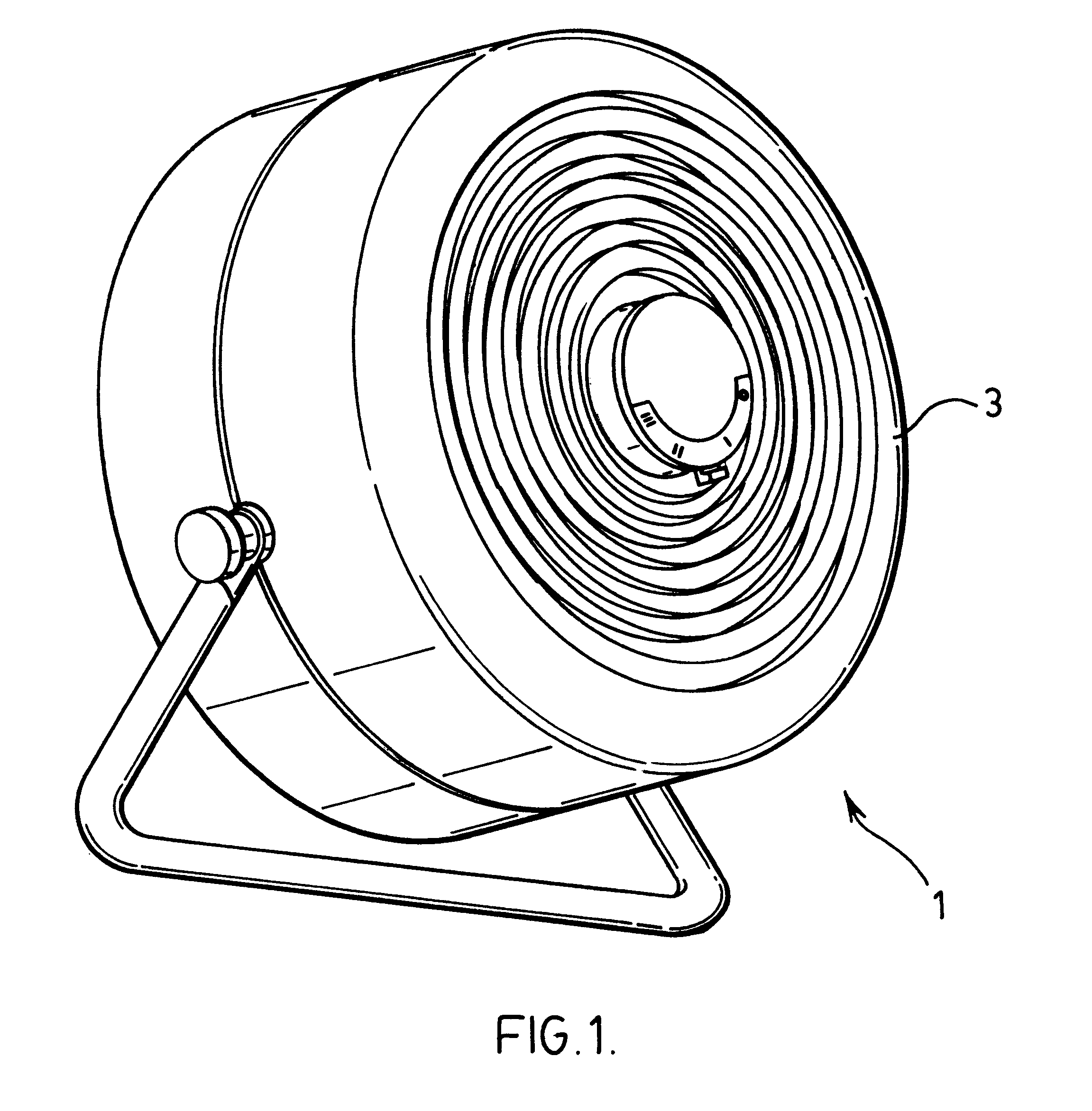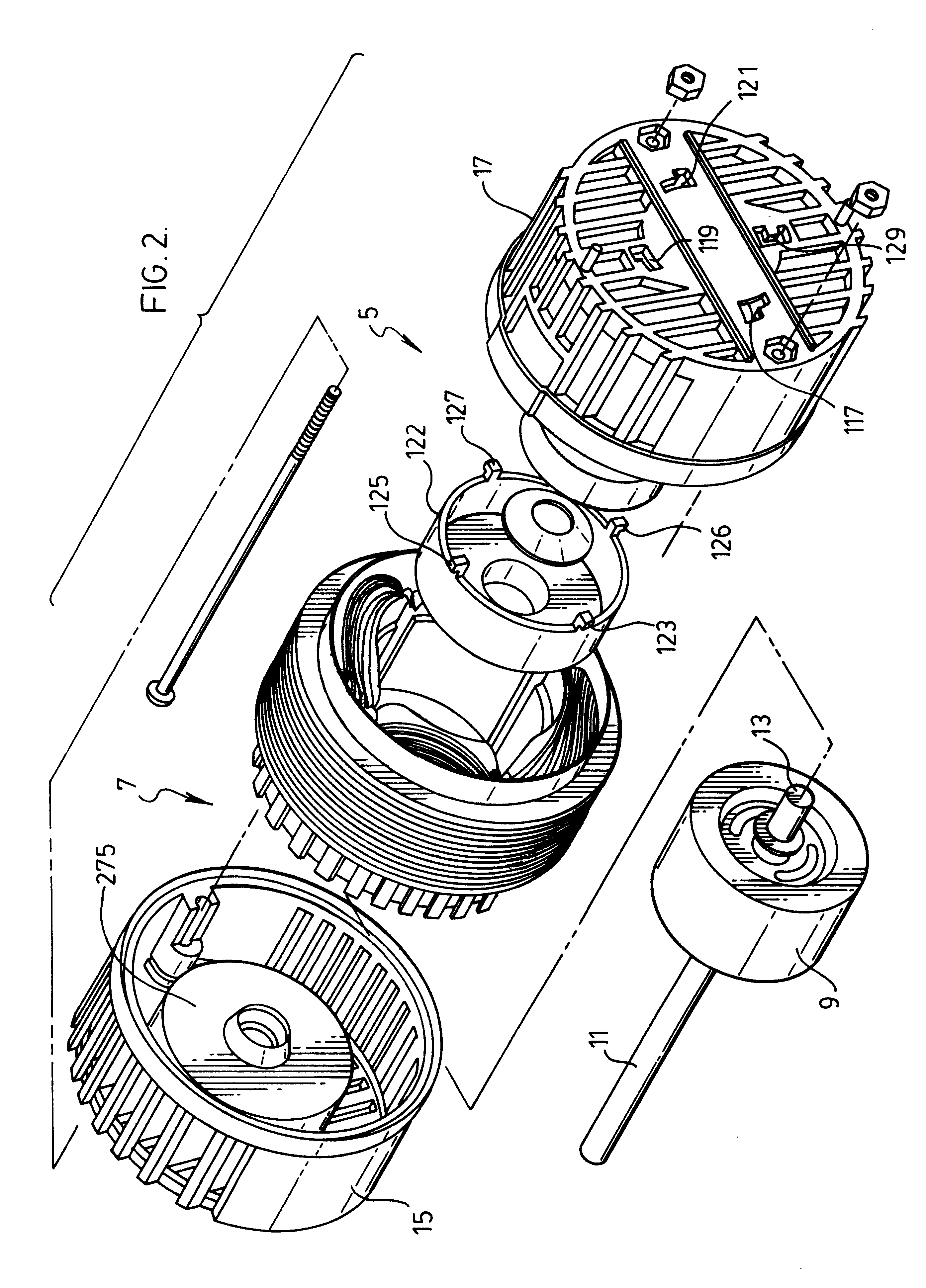Motor mounted switch
a technology of motors and switches, applied in the direction of coupling device connections, contacts, dynamo-electric machines, etc., can solve the problems of preventing shorting between the windings and the stator, reducing the reducing the service life of the rotor, so as to prevent shorting and add longevity to the rotor
- Summary
- Abstract
- Description
- Claims
- Application Information
AI Technical Summary
Benefits of technology
Problems solved by technology
Method used
Image
Examples
Embodiment Construction
FIG. 1 show an electrical appliance and specifically a multi-speed electric fan generally indicated at 1. This fan includes a main fan housing 3 containing internal components including a motor construction generally indicated at 5 in FIG. 2 of the drawings.
The motor construction is built around a stator generally indicated at 7 and a rotor 9 which rotates within stator 7. Rotor 9 includes shaft portions 11 and 13 which are trapped within and lubricated by the housing and lubricated at bearing regions for the motor which is formed by main motor housing sections 15 and 17.
FIG. 4 of the drawings shows the main metallic body portion 19 of stator 7. This metallic body portion is formed by a plurality of metallic layers 21 laminated to one another.
According to a preferred feature of the invention, the stator which, in this case, is used to form a four pole motor is completed by forming a bobbin have four separate winding regions 23, 25, 27 and 29 from resin material injection molded dire...
PUM
 Login to View More
Login to View More Abstract
Description
Claims
Application Information
 Login to View More
Login to View More - R&D
- Intellectual Property
- Life Sciences
- Materials
- Tech Scout
- Unparalleled Data Quality
- Higher Quality Content
- 60% Fewer Hallucinations
Browse by: Latest US Patents, China's latest patents, Technical Efficacy Thesaurus, Application Domain, Technology Topic, Popular Technical Reports.
© 2025 PatSnap. All rights reserved.Legal|Privacy policy|Modern Slavery Act Transparency Statement|Sitemap|About US| Contact US: help@patsnap.com



